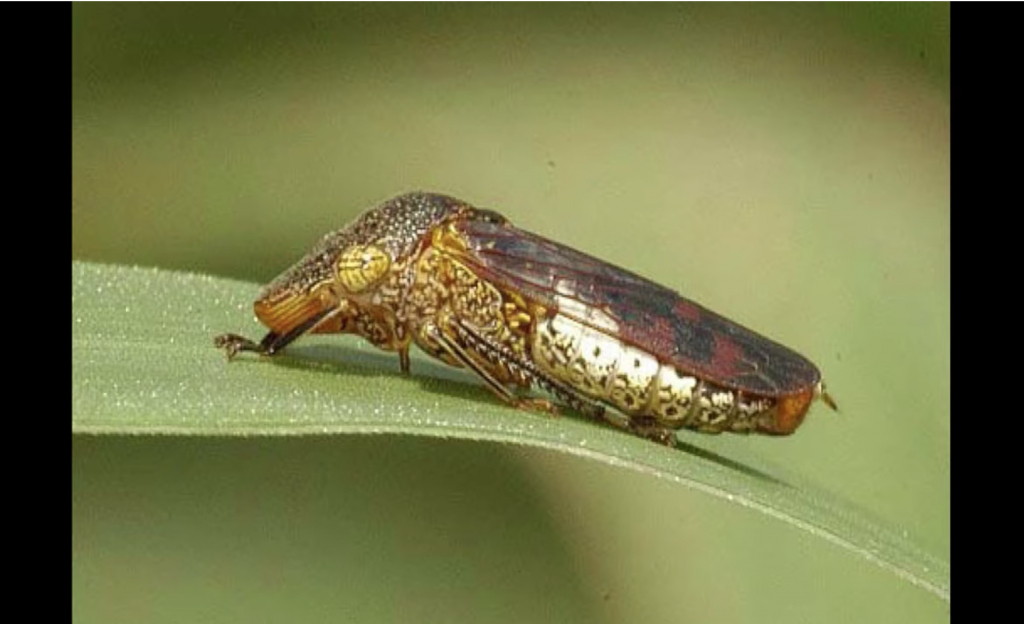
The Glassy-Winged Sharpshooter has been spreading a devastating disease among grapevines in California wine country. CRISPR-editing their genes can stop the spread. (Source: Center for Invasive Species Research)
Altering Sharpshooter DNA Will Help CA Grape Growers Save Crops for Wine Production
It acted somewhat like a digital virus. Being nearly invisible, the threat attacked grapevines in California, according to a piece from techologyreview.com and MIT.
Less than a decade after it was first identified in California, an invasive gnat-sized insect called the glassy-winged sharpshooter had turned the bacterium that causes Pierce’s Disease, which destroys grapevines, from a nuisance to a nightmare. The oblong bug, with wings like red-tinged stained glass, is fast and flies farther than native sharpshooters, and it can feed on tougher grapevines. Its arrival, which the state suspects occurred in the late ’80s, supercharged the spread of the disease.
Central California grape grower Steve McIntyre was familiar with Pierce’s Disease. But that did not prepare him for what he saw when he visited his brother’s Southern California citrus and avocado farm in 1998. The disease, which causes vines to wither and grapes to deflate like old balloons, had long existed in California. But the infection he saw on a farm adjacent to his brother’s property seemed different.
“It was devastation,” says McIntyre. Blocks of grapes looked as though their irrigation had been entirely cut. On his flight home, McIntyre contemplated calling a realtor to offload his land. His own vines, he thought, were doomed.
It may be a little different than a malware attack on your computer but Pierce’s disease works almost as fast and almost as deadly.
Through inspections and targeted pesticide spraying, the state has largely been able to confine the invasive sharpshooter to Southern California. But the disease still has no cure, and it’s at risk of getting worse and harder to combat due to climate change.
So briefly the rest of the article explains the proposition of altering the pesky insect’s gene pool. By allowing CRISPR scientists to change the genome of the glassy-winged sharpshooter so that it can no longer spread the bacterium. The article asks and answers many of the questions a layman or a student might need to understand this approach to pest control.
Such a solution is possible thanks to CRISPR gene-editing technology, which has made modifying the genes of any organism increasingly simple. The technique has been used in experiments in cancer immunotherapy, apple breeding, and—controversially—human embryos. Now a growing number of researchers are applying it to agricultural pests, aiming to control a range of insects that together destroy about 40% of global crop production each year. I
If successful, these efforts could reduce reliance on insecticides and provide an alternative to genetic modifications to crops.
There is so much more in Emma Foehringer Merchant’s article and it is linked below. It goes deeper into the CRISPR science that has been proven to alter the genomes of many living things. From humans to monkeys, to plants. The way AI touches and instantly changes something into a better idea or shows the right perspective to view a problem can be nothing short of magical. However, Ai is only just beginning to rebuild our entire civilization.
read more at technologyreview.com







Leave A Comment